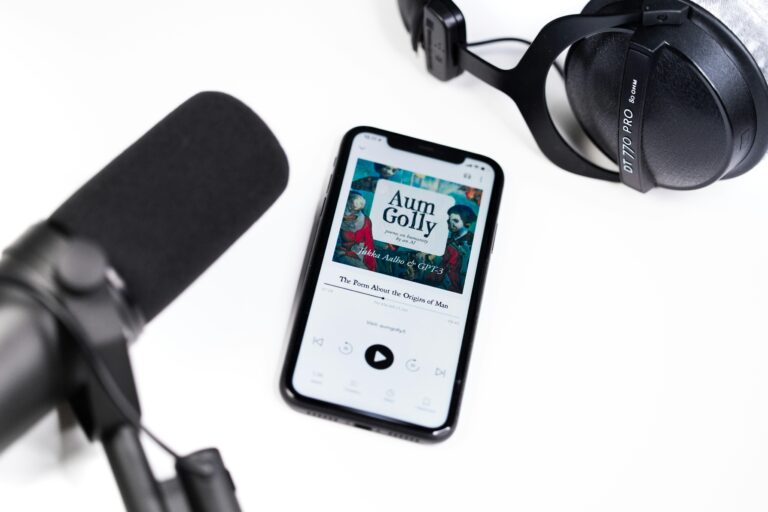In the rapidly evolving landscape of digital content creation, podcasting has emerged as a pivotal medium for professionals seeking to engage diverse audiences with compelling audio narratives. As mobile technology continues to advance, the capacity to produce high-quality podcasts directly from smartphones has transformed from a niche convenience into a mainstream necessity. In 2024, a growing array of sophisticated mobile applications offers podcasters powerful tools that streamline every stage of production-from recording and editing to publishing and analytics-without the need for bulky equipment or extensive technical expertise. This article provides an analytical overview of the top mobile apps shaping professional podcast creation this year, examining their features, usability, and impact on the creative workflow for content creators navigating an increasingly competitive market.
Table of Contents
- Top Features to Look for in Mobile Podcast Creation Apps
- Comparative Analysis of User Interface and Editing Tools
- In-Depth Review of Audio Quality and Export Options
- Evaluating Integration Capabilities and Monetization Support
- To Conclude
Top Features to Look for in Mobile Podcast Creation Apps
When selecting a mobile podcast creation app, prioritizing intuitive editing tools is crucial. Look for features such as multi-track editing, noise reduction, and easy trimming that allow for professional-grade audio refinement without a steep learning curve. Compatibility with external microphones and seamless integration with popular platforms for publishing and distribution further enhance usability. Additionally, real-time audio effects and customizable sound profiles help podcasters achieve unique soundscapes directly from their mobile devices, eliminating the need for complex desktop software.
Another important consideration is the app’s support for collaboration and content management. Features like cloud syncing, guest remote recording capabilities, and team access permissions streamline the workflow for creators working in groups or with producers. Robust file management systems, including automatic backups and export options in various audio formats, simplify post-production and ensure content is safe and versatile. Below is a comparison of key features to keep in mind:
| Feature | Benefit | Must-Have for Pros |
|---|---|---|
| Multi-track Editing | Layer multiple audio sources | Yes |
| Remote Recording | Record guests anywhere | Yes |
| Noise Reduction | Improve audio clarity | Yes |
| Cloud Sync | Access projects on all devices | Recommended |
| Export Formats | Flexibility in distribution | Recommended |
Comparative Analysis of User Interface and Editing Tools
When evaluating and contrasting the user interfaces of top podcast creation apps, it’s clear that the balance between accessibility and depth distinguishes the best platforms. Leading apps like Riverside and Anchor adopt minimalist design philosophies, offering users an intuitive layout that minimizes learning curves. Their interfaces feature contextual tooltips and drag-and-drop functionalities, streamlining episode assembly for beginners. On the other hand, apps like Hindenburg and Ferrite cater to advanced users with modular interfaces, providing custom workspaces and multiple track views for detailed audio manipulation-a significant advantage for those handling complex projects.
The editing tools offered also reflect distinct strategic priorities. While some apps emphasize AI-powered enhancements and automated cleaning features-such as noise reduction and volume leveling-others focus on granular manual controls for expert sound engineers. The following table highlights key aspects of the UI and editing toolsets for the top contenders:
| App | UI Simplicity | Advanced Features | AI Integration | Multi-track Editing |
|---|---|---|---|---|
| Riverside | High | Moderate | Yes | Yes |
| Anchor | Very High | Basic | Partial | No |
| Hindenburg | Moderate | Extensive | No | Yes |
| Ferrite | Moderate | Extensive | No | Yes |
In-Depth Review of Audio Quality and Export Options
Evaluating Integration Capabilities and Monetization Support
When selecting a mobile app for podcast creation, seamless integration with popular platforms and tools can drastically enhance your workflow. Top-tier apps today boast connectivity with services like Spotify, Apple Podcasts, and YouTube, enabling direct uploads and access to broad audiences without cumbersome manual steps. Additionally, integration with sound libraries, editing suites, and analytics dashboards ensures creators can polish content and monitor performance efficiently within a unified environment.
Monetization support has become a decisive factor for professional podcasters aiming to transform passion into profit. Leading applications now offer native features such as dynamic ad insertion, listener subscription models, and tipping functionalities. These capabilities reduce dependence on third-party services and give creators comprehensive control over revenue streams. Below is a comparison of key integration and monetization features among top mobile podcast apps:
| App Name | Platform Integration | Monetization Features | Analytics Dashboard |
|---|---|---|---|
| PodPro Studio | Spotify, Apple Podcasts, YouTube | Dynamic Ads, Subscriptions, Tips | Advanced |
| CastMaster | Apple Podcasts, Google Podcasts | Subscriptions, Sponsorship Tools | Basic |
| StreamCast | Spotify, SoundCloud | Dynamic Ads, Patreon Integration | Intermediate |
To Conclude
In conclusion, the evolving landscape of professional podcast creation in 2024 demands mobile apps that combine versatility, intuitive design, and advanced features. The solutions highlighted in this article demonstrate a clear trend toward integrating comprehensive recording, editing, and distribution tools within mobile platforms, empowering creators to produce high-quality content on the go. As technology continues to advance, podcast professionals must carefully evaluate these apps based on their specific workflow requirements and audience engagement strategies to maintain a competitive edge. Ultimately, selecting the right mobile app is a strategic decision that can significantly impact both the creative process and the overall success of a podcast in today’s dynamic digital environment.

